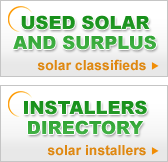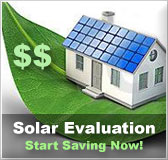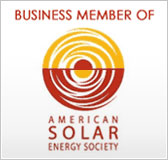Alternative energy production tax credit:
-Residents of Pennsylvania who invest in alternative energy production
projects are eligible to receive a 15% tax credit on total project
costs.
-Qualifying alternative energy projects are those that produce energy
from wind, solar, biomass, geothermal, waste coal, waste energy, and
alternative fuels.
-The maximum incentive for each tax payer is $1,000,000.
Home efficiency incentives – Pennsylvania Home Energy:
-This program is available to Pennsylvania residents who are customers
of West Penn Power and designed to encourage residents to reduce their
home energy use.
-Incentives amounts vary depending upon the amount of reduced energy
usage and energy efficiency in homes under the Energy Star program.
A minimum rebate amount of $200 will be issued if the energy in the
home is reduced by 20% and a maximum rebate amount of $1,000 will
be issued is the energy use is reduced by 49%.
High performance building incentives program – DCED:
-This program provides loans and grants for the construction or renovations
of “green” buildings. Green buildings are those build
with the intention to conserve energy and use renewable energy and
energy efficiency technologies.
-Buildings must achieve the LEED Gold certification to qualify.
-Residential loan amounts will not exceed $100,000. All loans have
a fixed interest rate of 4% and a 10 year payback period.
-Grants are available up to 10% of the total project cost or $500,000.
Pennsylvania sunshine solar rebate program:
-This rebate program is for Pennsylvania homeowners who install solar
photovoltaic and solar thermal systems.
-The rebate amount for residential solar PV systems is $2.25 per watt
for the first 10 watts of capacity. The rebate for a solar thermal
system is 25% of the system cost.
-Applications must be filled out by an approved installer on behalf
of the applicant for this incentive.
Net metering:
-Net metering is available to residents in Pennsylvania who have
facilities that generate electricity through solar, wind, methane,
biomass, hydropower or geothermal systems.
-The power produced by the renewable energy system is used to offset
the kilowatt hours consumed each month. The incentive shows up as
a credit on the customer’s monthly bill.
-Systems must have a capacity of 50 kilowatts or less to be eligible
for net metering.
Residential renewable energy tax credit:
-This personal tax credit allows the taxpayer to claim a credit of
30% of expenditures including labor costs and installation of qualified
residential solar-electric systems, solar water heating systems or
fuel cells. Small wind-energy systems and geothermal heat pumps can
also be accredited for.
-Solar-electric systems and solar water heaters have a maximum incentive
of $2,000 if placed in service before 2009. There is no maximum incentive
for systems placed after 2008.
-The excess amount of the federal tax credit may be carried forward
to the next taxable year if it exceeds tax liability.
-This can be carried forward until 2016, but after that, it is unknown
if the unused credit will be able to be forwarded.
Residential energy conservation subsidy exclusion:
-This is a personal exemption of 100% of energy conservation subsidies
provided by public utilities.
-The value of a purchase or installation of any energy conservation
measure by a customer such as solar water heat, solar space heat or
photovoltaics will not be included in the customer’s gross income.
-Customers of an electric utility company, who participate in the
utility’s energy conservation program, may receive a rate reduction
of electricity furnished or a nonrefundable credit against the purchase
price of the electricity on each monthly electric bill.
Energy-efficient mortgages:
-This is a federal loan program where homeowners can use EEM (energy-efficient
mortgages) to finance renewable energy technologies in a home.








